When looked from a wider point of view, things are going greater than it seems! I'd like to see the German HQ when they received the photo! I'm expecting a light untergang moment there 
- 2
- 1
North Africa? Hmm, much as some may hanker for old Ottoman ambitions all the way across to Algeria, I think more released puppet states tied into a wider Instanbul (or Cairo?) Pact arrangement would probably be the go, if it can be managed.
Paradox just generally across the board really screwed up the unit models. Ship models are the worst or at least most obvious offenders but you see similar nonsense with the tank and plane models in some countries. The problem seems to be that somehow whoever was in charge of the models at Paradox inexplicably assumed that players wouldn't keep their research up to date, either that or they wanted to make the player feel like keeping their research up to date was an extraordinary accomplishment and "reward" us with post-war models to emphasize how much better we were running our countries than OTL. Of course, in spite of Paradox's worst efforts even the AI nations are capable of "outpacing" OTL by this logic so regardless of their logic this is nothing short of an utter cock-up as we all expected.Looks like no major nation of the Allies or Comintern is taking it's espionage as seriously as Turkey does it's own... Except maybe the UK.
From what I could find online it looks like Project 72 was a 1920's Soviet plan to convert some, or all, of the Borodino-Class Battlecruisers into Armoured Carriers with a displacement in the 20.000-30.000 tonne range. (none of them even had a superstructure or turrets as their construction was interrupted in 1916 and the lead ship had been launched in late 1915). They actually started working (tentatively) on the conversion of the lead ship of the class, the Izmail, in 1925, but the project got shut down 8 Months in. The final hull of the 4 ship Borodino-class was scrapped in the early 1930s. I'm really baffled by Paradox's choice of which names to include, and at what level. A late 1920s Soviet Carrier conversion project that never came to fruition somehow is a CVL (IV), on the same level as the British Colossus Class. Meanwhile the Saipan-Class is only CVL (III), Independence-Class CVL (II) and Langley-Class, understandably CVL (I). None of the CVE classes is represented, despite the fact that the USN built 145 CVEs of various types right up until 1945.
It looks like the ATL Soviet Navy has been stripped of almost all of it's designers. The only improvements over the in-game 1936 starting techs are:
-1918 CA Armour instead of none on the (improved) Krasnyi Kavkaz Class
-Spotting Level 1 to increase surface detection for CL & DD
All of the 'current' US Ship classes are post-war, with the De Moines, Wocester, and Tang classes built in the late 1940s, and the Adams-class laid down in the late 1950's.
The United States Class is interesting as it was never built. It was to be a class of 5, 80.000 tonne + conventionally-powered super-carriers (a mere 7m shorter than Gerald R. Ford, in 1948) that could launch and recover planes capable of delivering early Nukes weighing 5 tonnes each . The first ship was laid down in april 1949 but the project was cancelled 5 days later. The cancellation came about due to budget cuts, and the fact that the Air Force's proposed long-range heavy bombers were cheaper as a delivery system. The fact that Paradox considers the United States-Class a 1942 design is laughable really. Of course, this problem isn't limited to the US. The UK Destroyers have the same issue with the County-Class Destroyers (the first one commissioned in 1962) featuring in every single game I've ever played. According to Paradox they're 1942-level ships, the preceding post-war Daring-Class (1949) is from 1940, and the Battle-Class (1944) is from 1938.
The B-26 is clearly superior to the Pe-2, so good call there.
That map really shows once again how well the Comintern has been doing those last months.
Hess in particular will be frantic, after his earlier boasting and disparagement of the UGNR. He should think about that plane to England ...When looked from a wider point of view, things are going greater than it seems! I'd like to see the German HQ when they received the photo! I'm expecting a light untergang moment there
When the episodes cover a relatively short period, it is useful to take a step back for perspective. I think it is the Milli Sef himself who will be interested in walking through the rubble in Timisoara for the cameras.Our salient has gone and punched out what, nearly 250km? That's excellent! Good on the Russians too for punching the Krauts back so far themselves, though clearly they need to be able to follow it up by re-cutting off Heeresgruppe Nord.
Also, which commander might have said, "Timisoara, I shall return!"? We need that officer to be nearby when the city inevitably returns to our control.
Guessing how long any post-war settlement may last will be an interesting debate. If we can win it, or course!Funnily enough, it'll probably end up like turkey otl, a massive battle ground of competing interests from old colonial powers, the two new superpowers and local interests. Its going to be a huge mess, even if communists france manages to keep hold of Algeria somehow.
Best case scenario probably is full British withdrawal, followed by stalin and Turkey agreeing that north Africa really needs to be kept as clear of amercian satellites as possible for the sake of dominating the med sea. Thus Egypt and the former colonies along the coast are going to be pressurised both from old colobial masters britian and france but also the us, the turks and russia. I can see it going all sorts of ways but the best for us is probably going to be france and Turkey splitting a sphere of infleunce over several vassal/puppet states, with eypgt being especially close to turkey. This will be much easier if turkey and other republics annex the middle east and Arabia but I can see that area being even more of a trouble spot.
Yes, the Soviets have done pretty well, coming close to a genuine AI v AI breakthrough in the north last month, until the Germans scrambled a defence. And the Turkish offensive has been very pleasing, against some tough resistance.It is really useful to see how much has changed in (relatively speaking) just a few months.
Modern by the model classes, but not so modern by the actual yearly developments. The old Paradox research wobbles at work. Trying hard to close the current pocket and not losing sight of the potential larger one beyond it. Budapest is a tough nut to crack though - a real pity we couldn’t snatch it earlier.Damn America's fleet is modern!
Any chance of closing that pocket between Romania and Hungary any time soon?
It seems the myriad Allied minors are probably the only ones going big on espionage!Looks like no major nation of the Allies or Comintern is taking it's espionage as seriously as Turkey does it's own... Except maybe the UK.
More paradox fast and loose research.From what I could find online it looks like Project 72 was a 1920's Soviet plan to convert some, or all, of the Borodino-Class Battlecruisers into Armoured Carriers with a displacement in the 20.000-30.000 tonne range. (none of them even had a superstructure or turrets as their construction was interrupted in 1916 and the lead ship had been launched in late 1915). They actually started working (tentatively) on the conversion of the lead ship of the class, the Izmail, in 1925, but the project got shut down 8 Months in. The final hull of the 4 ship Borodino-class was scrapped in the early 1930s. I'm really baffled by Paradox's choice of which names to include, and at what level. A late 1920s Soviet Carrier conversion project that never came to fruition somehow is a CVL (IV), on the same level as the British Colossus Class. Meanwhile the Saipan-Class is only CVL (III), Independence-Class CVL (II) and Langley-Class, understandably CVL (I). None of the CVE classes is represented, despite the fact that the USN built 145 CVEs of various types right up until 1945.
Yeah, they’re not much further advanced than the Turkish navy!It looks like the ATL Soviet Navy has been stripped of almost all of it's designers. The only improvements over the in-game 1936 starting techs are:
-1918 CA Armour instead of none on the (improved) Krasnyi Kavkaz Class
-Spotting Level 1 to increase surface detection for CL & DD
All strangely awry. We really just need to go off the year models, don’t we?All of the 'current' US Ship classes are post-war, with the De Moines, Wocester, and Tang classes built in the late 1940s, and the Adams-class laid down in the late 1950's.
The United States Class is interesting as it was never built. It was to be a class of 5, 80.000 tonne + conventionally-powered super-carriers (a mere 7m shorter than Gerald R. Ford, in 1948) that could launch and recover planes capable of delivering early Nukes weighing 5 tonnes each . The first ship was laid down in april 1949 but the project was cancelled 5 days later. The cancellation came about due to budget cuts, and the fact that the Air Force's proposed long-range heavy bombers were cheaper as a delivery system. The fact that Paradox considers the United States-Class a 1942 design is laughable really. Of course, this problem isn't limited to the US. The UK Destroyers have the same issue with the County-Class Destroyers (the first one commissioned in 1962) featuring in every single game I've ever played. According to Paradox they're 1942-level ships, the preceding post-war Daring-Class (1949) is from 1940, and the Battle-Class (1944) is from 1938.
I’m looking forward to getting those babies. The Yak-4s may be better than Blenheims, but it’s not by that much.The B-26 is clearly superior to the Pe-2, so good call there.
In the West, at least. Which is what counts the most for now.That map really shows once again how well the Comintern has been doing those last months.
Agree. The models should be fun detail and flavour. Instead, it’s the year models that actually count. Why go to the effort then obviously mess it up?Paradox just generally across the board really screwed up the unit models. Ship models are the worst or at least most obvious offenders but you see similar nonsense with the tank and plane models in some countries. The problem seems to be that somehow whoever was in charge of the models at Paradox inexplicably assumed that players wouldn't keep their research up to date, either that or they wanted to make the player feel like keeping their research up to date was an extraordinary accomplishment and "reward" us with post-war models to emphasize how much better we were running our countries than OTL. Of course, in spite of Paradox's worst efforts even the AI nations are capable of "outpacing" OTL by this logic so regardless of their logic this is nothing short of an utter cock-up as we all expected.
Ah well, we’ll just live with it I guess. The gear you describe would seem like science fiction to the ATL Turkish Navy!Yes, all those US-shipclasses have the wrong date and wrong stats.
But it would be really challenging to give them correct stats. Even an early Charles F. Adams-destroyer had fully automatic radar guided 5-inch-guns, an ASROC-launcher for anti-submarine-rockets that could be fitted with nuclear warheads and a Tartar-SAM-launcher.
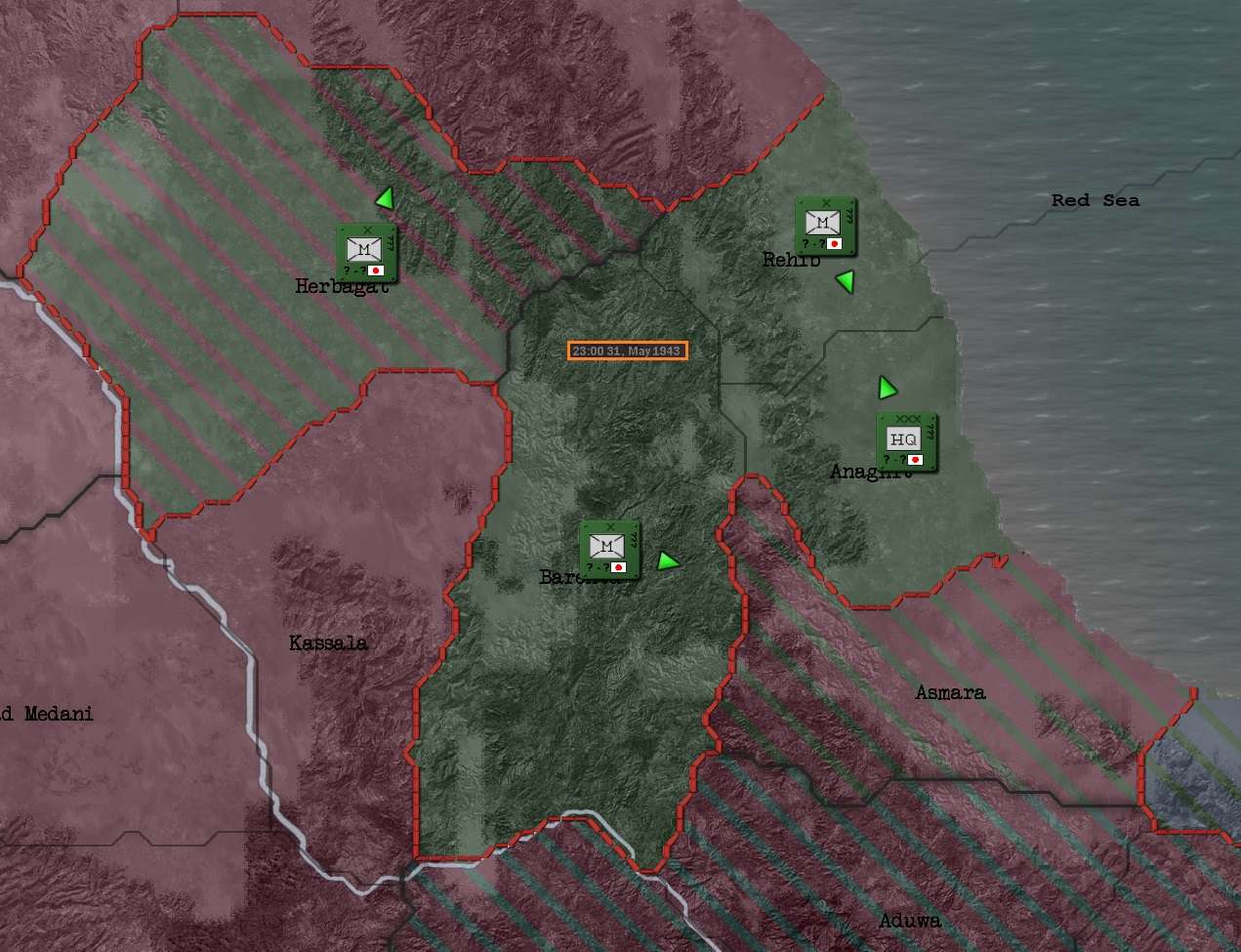
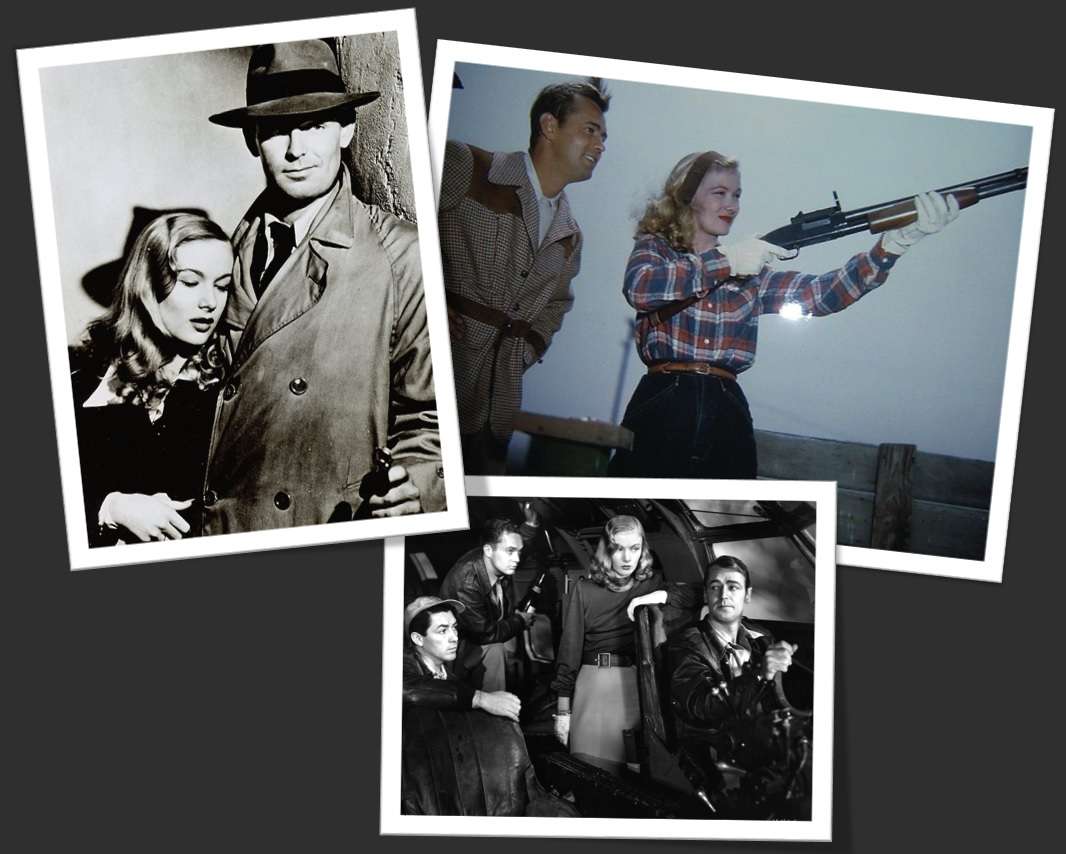
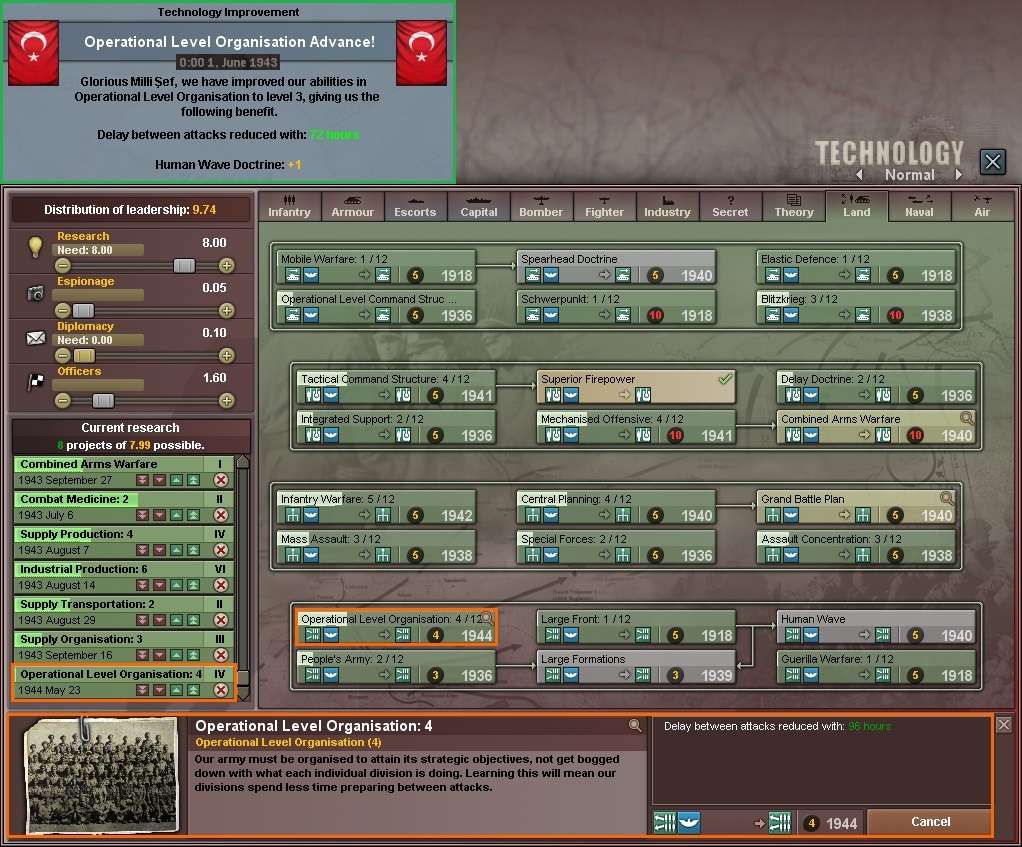
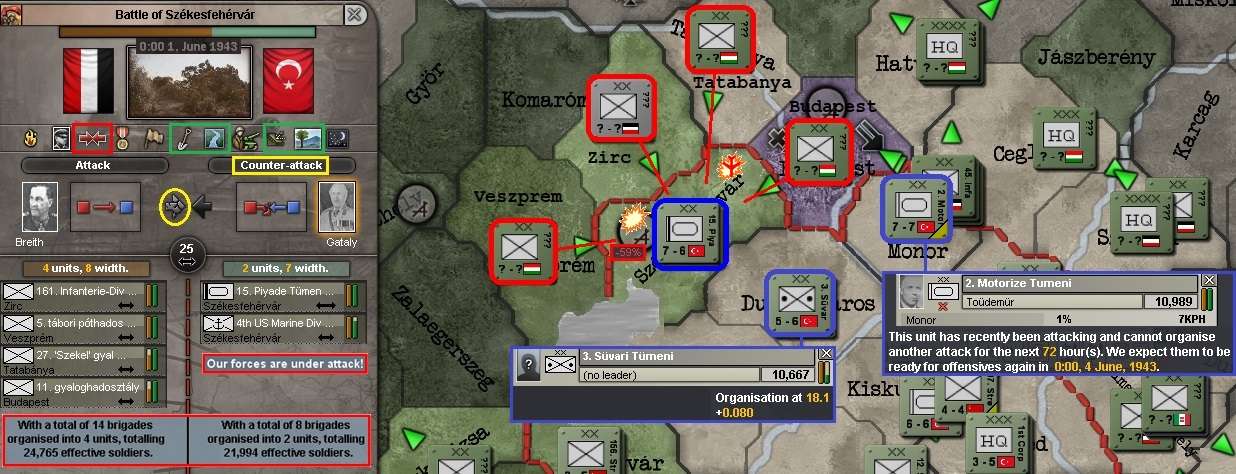
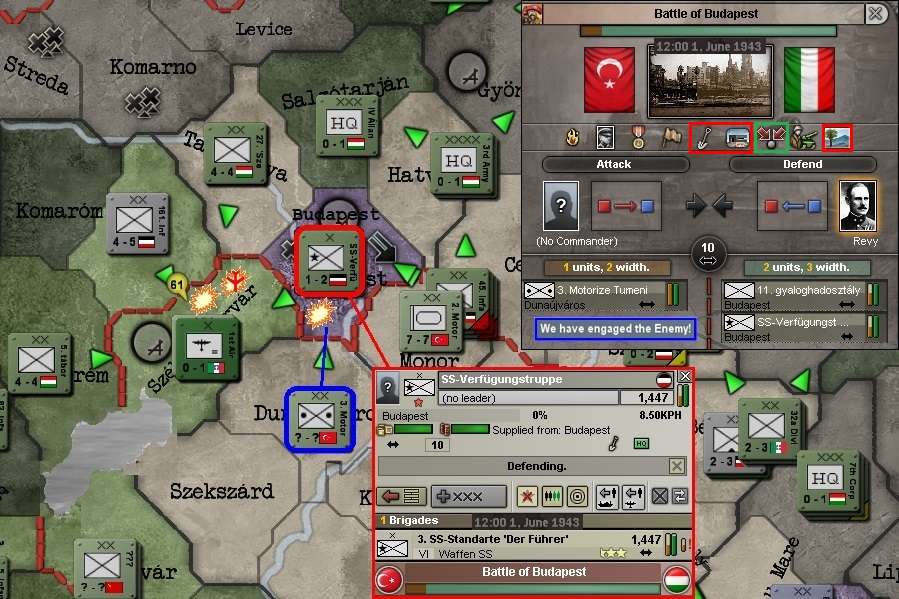
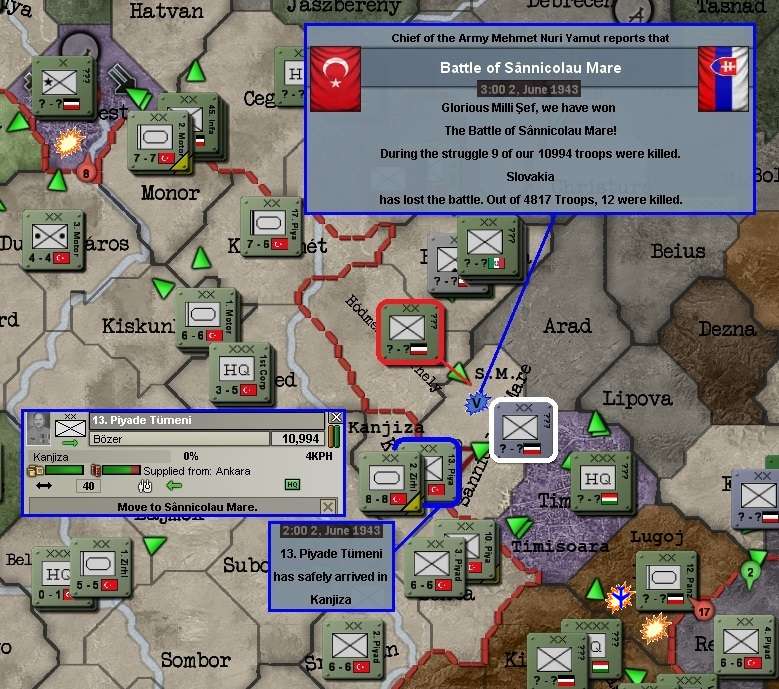
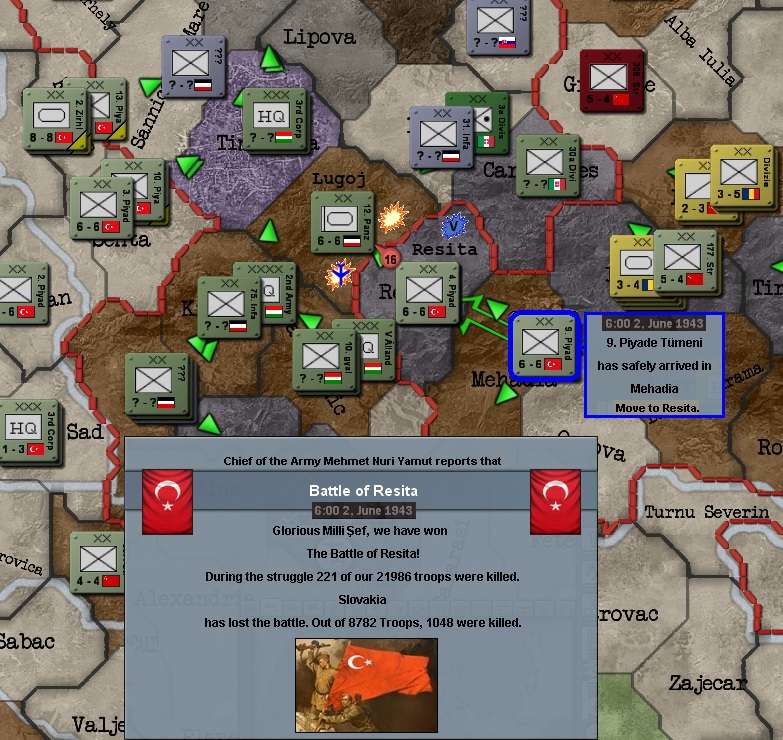
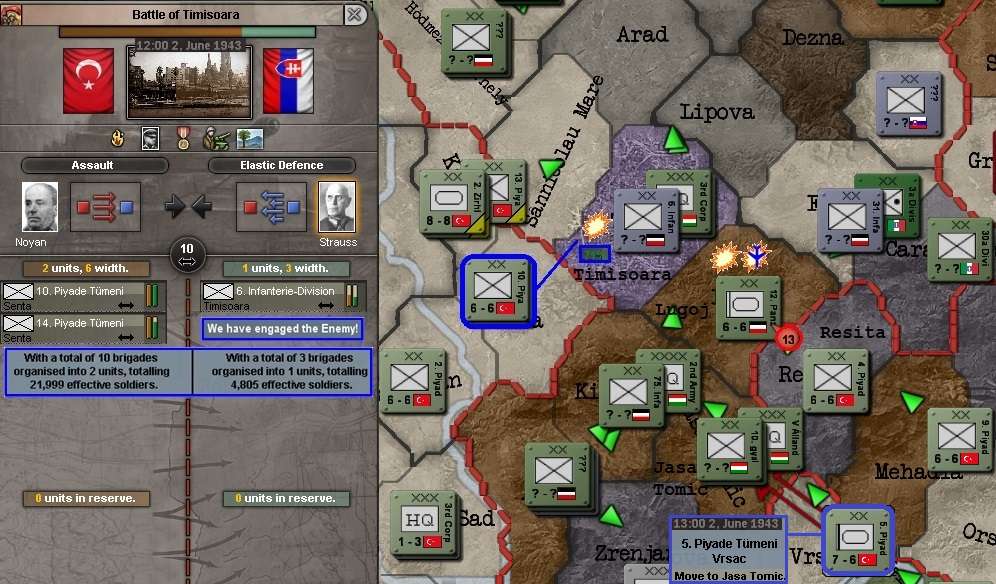
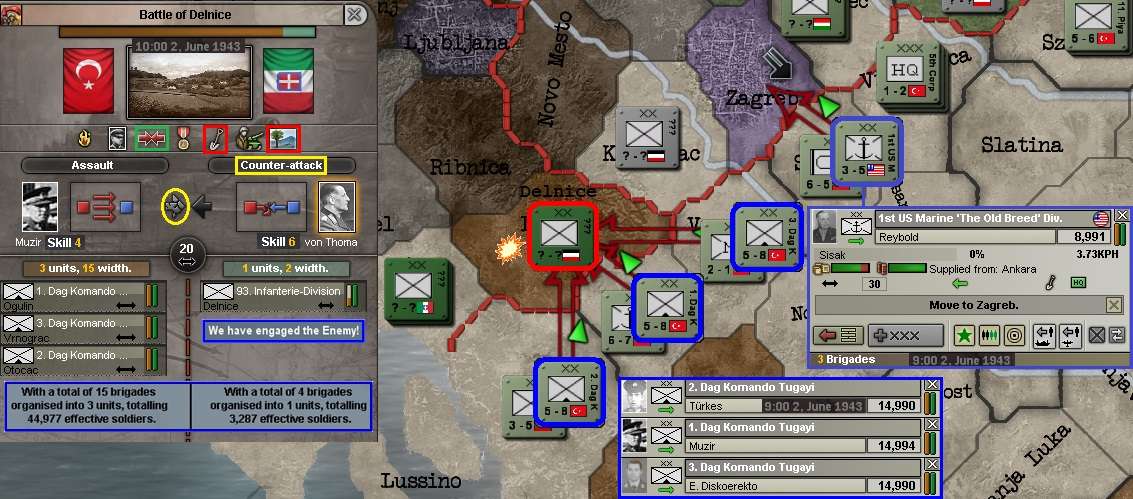
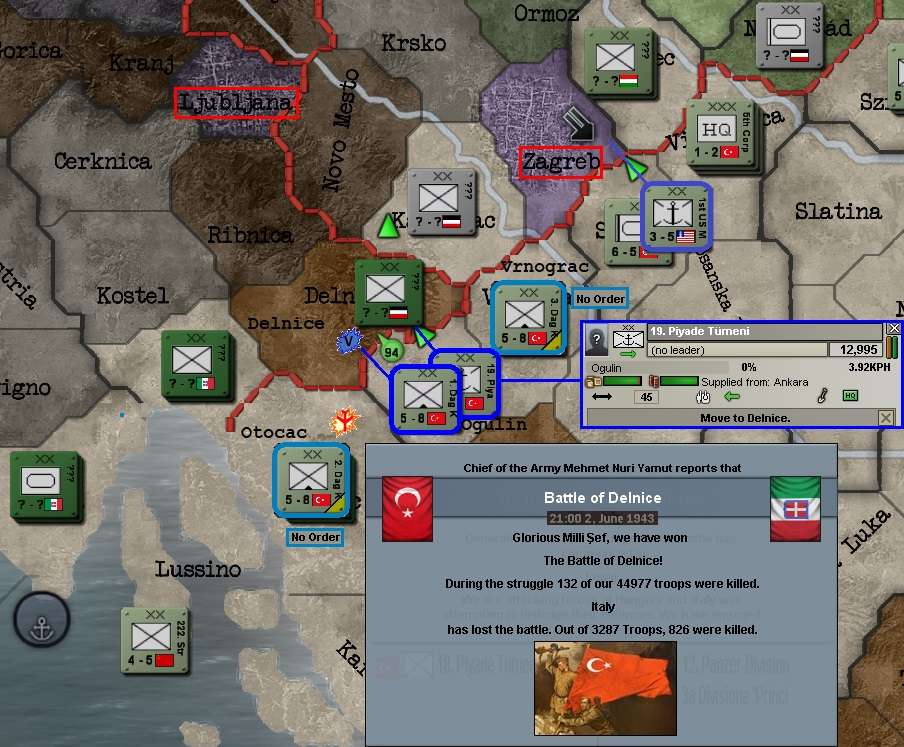
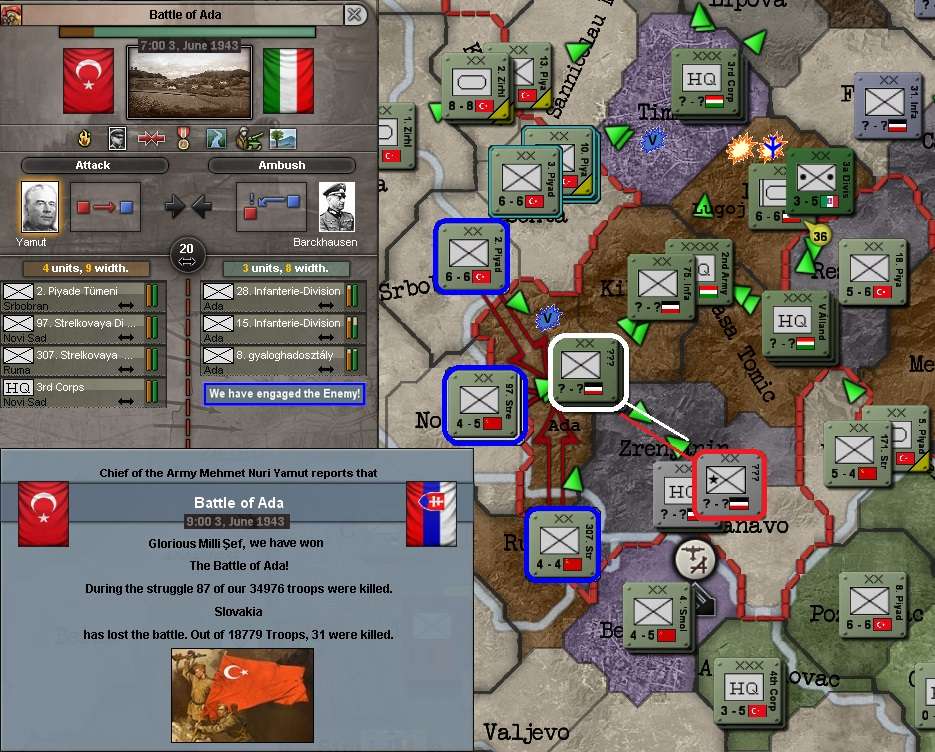
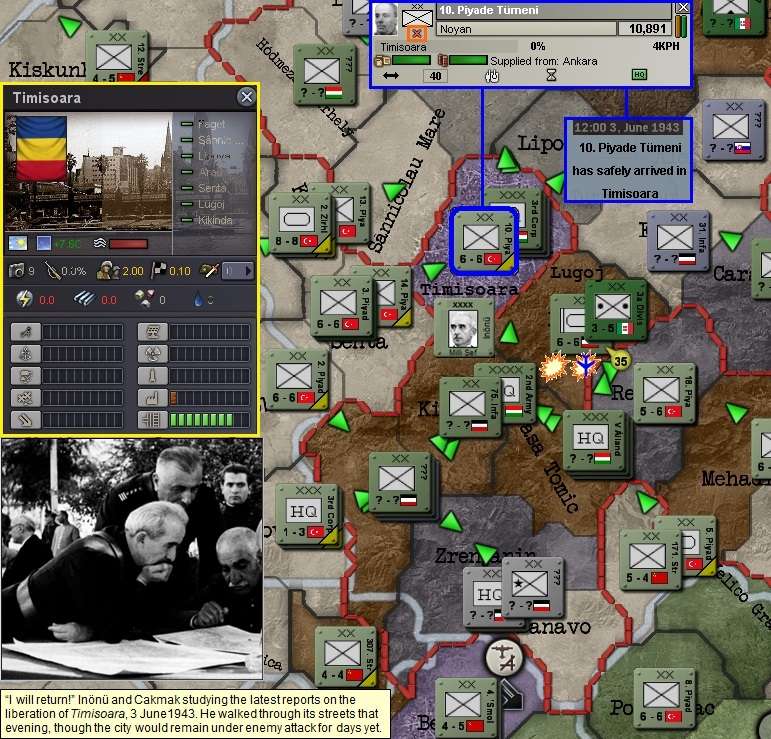
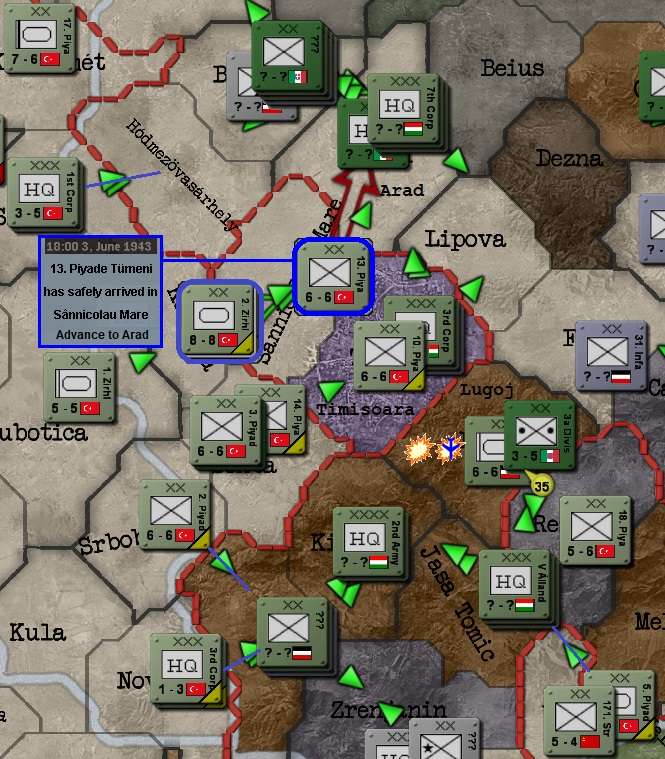
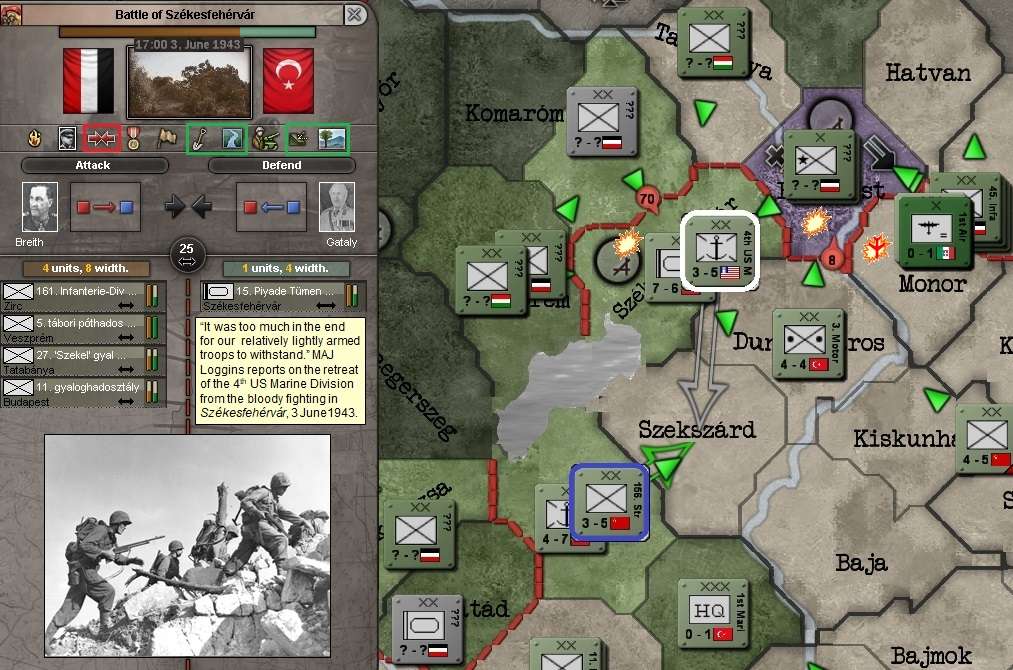
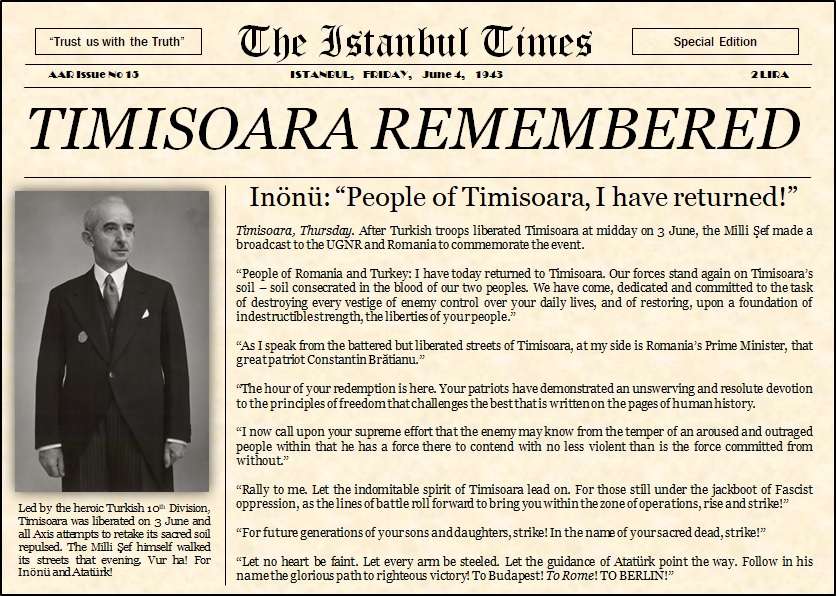
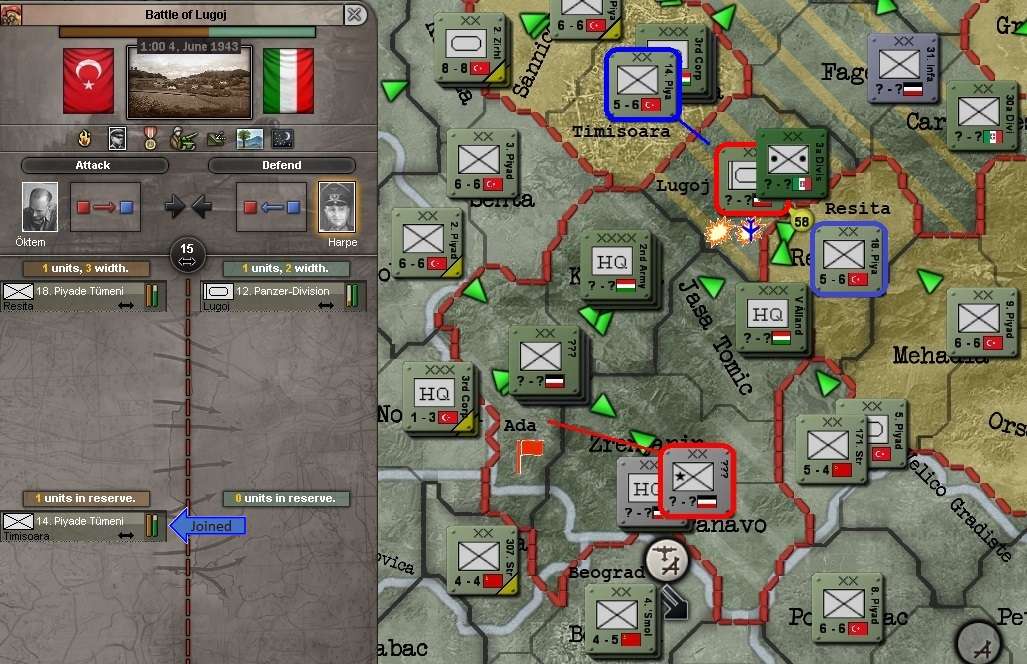
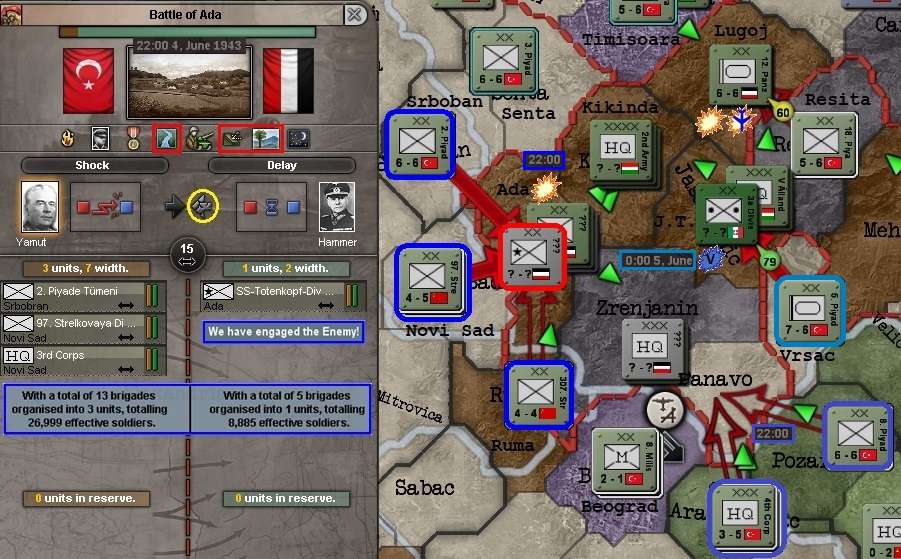
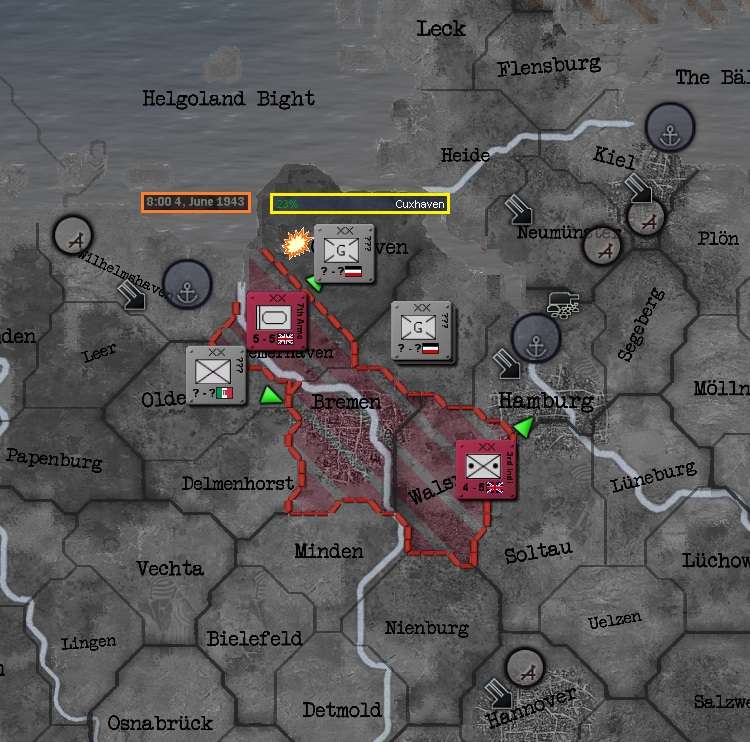
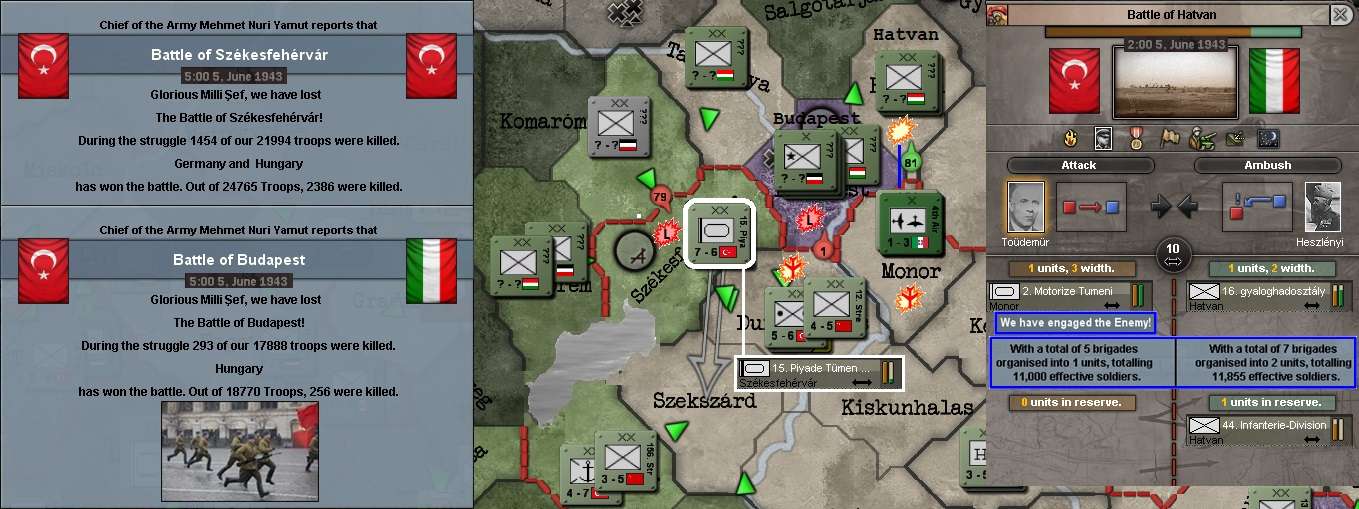
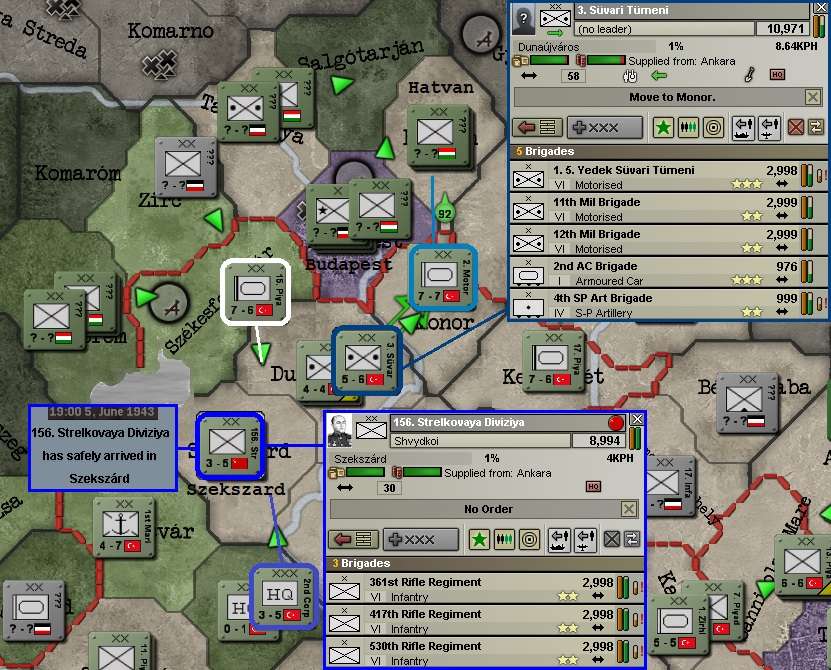
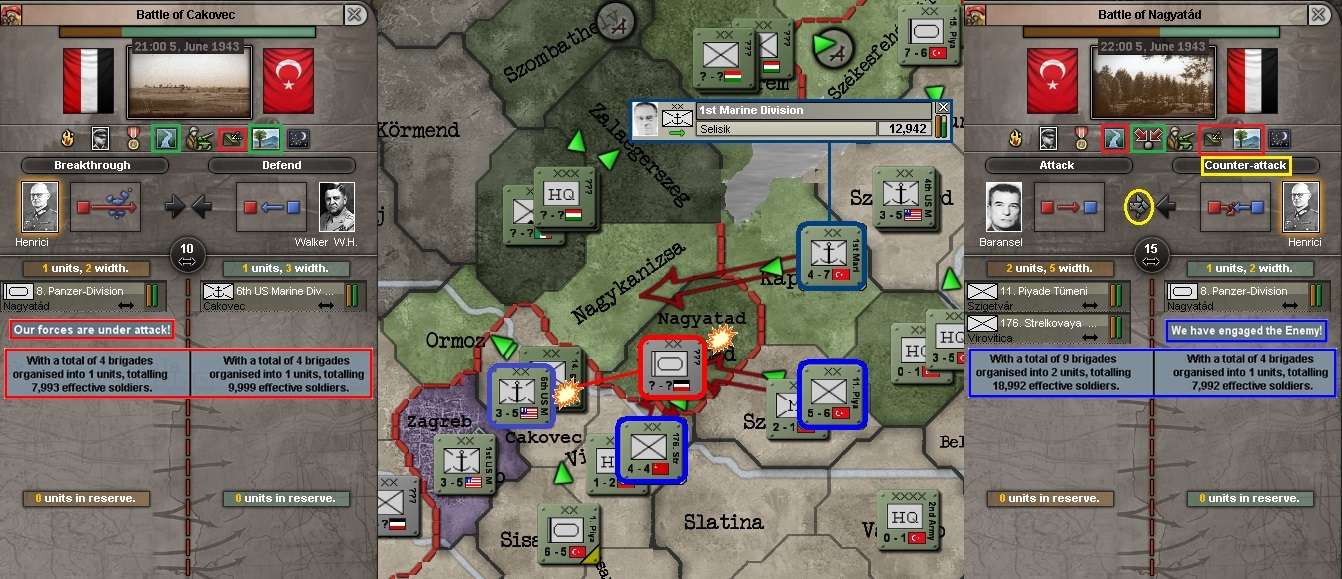
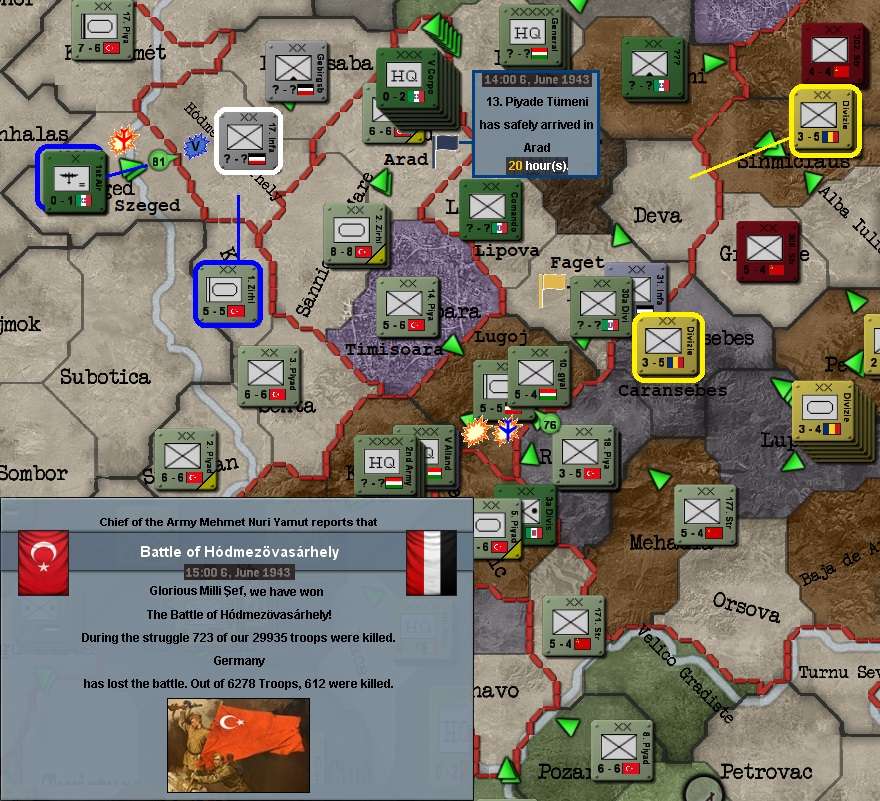
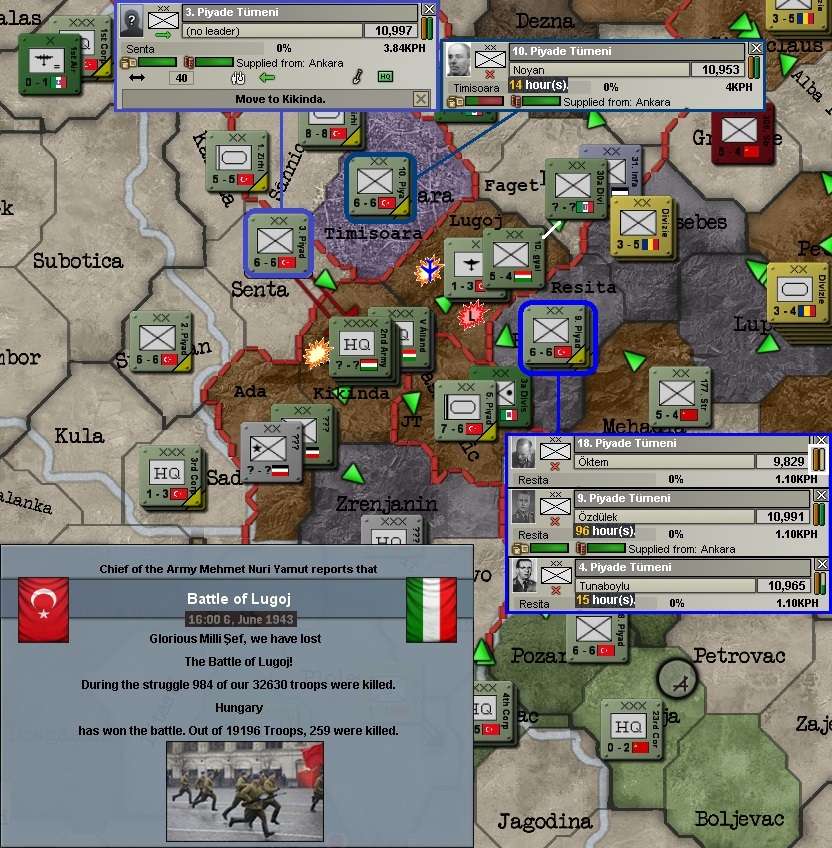
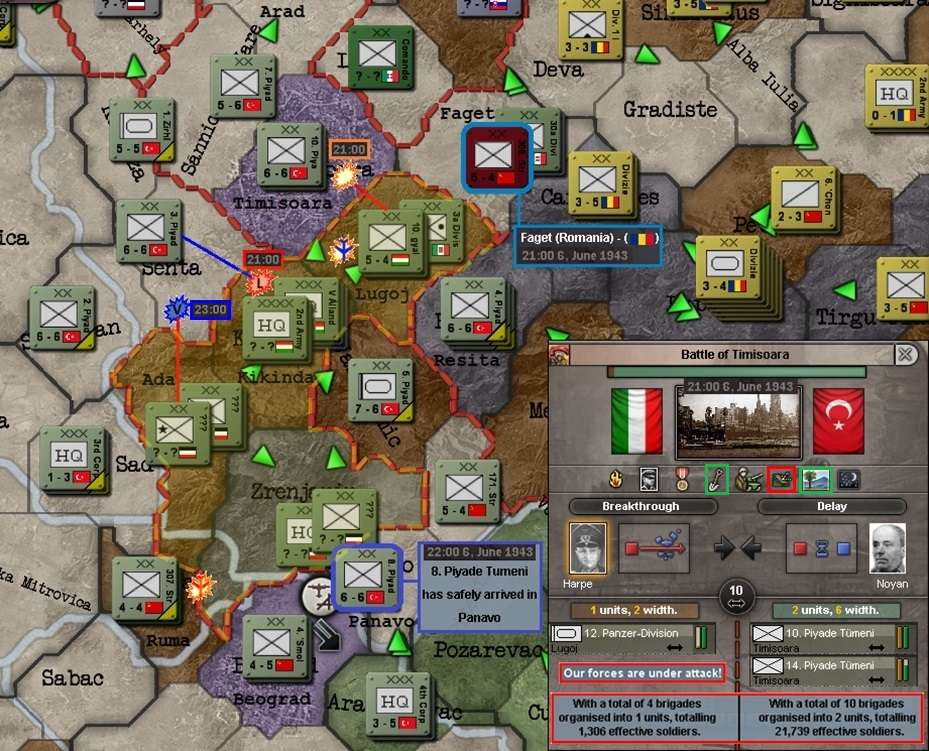
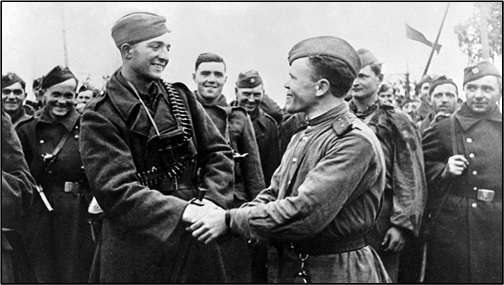
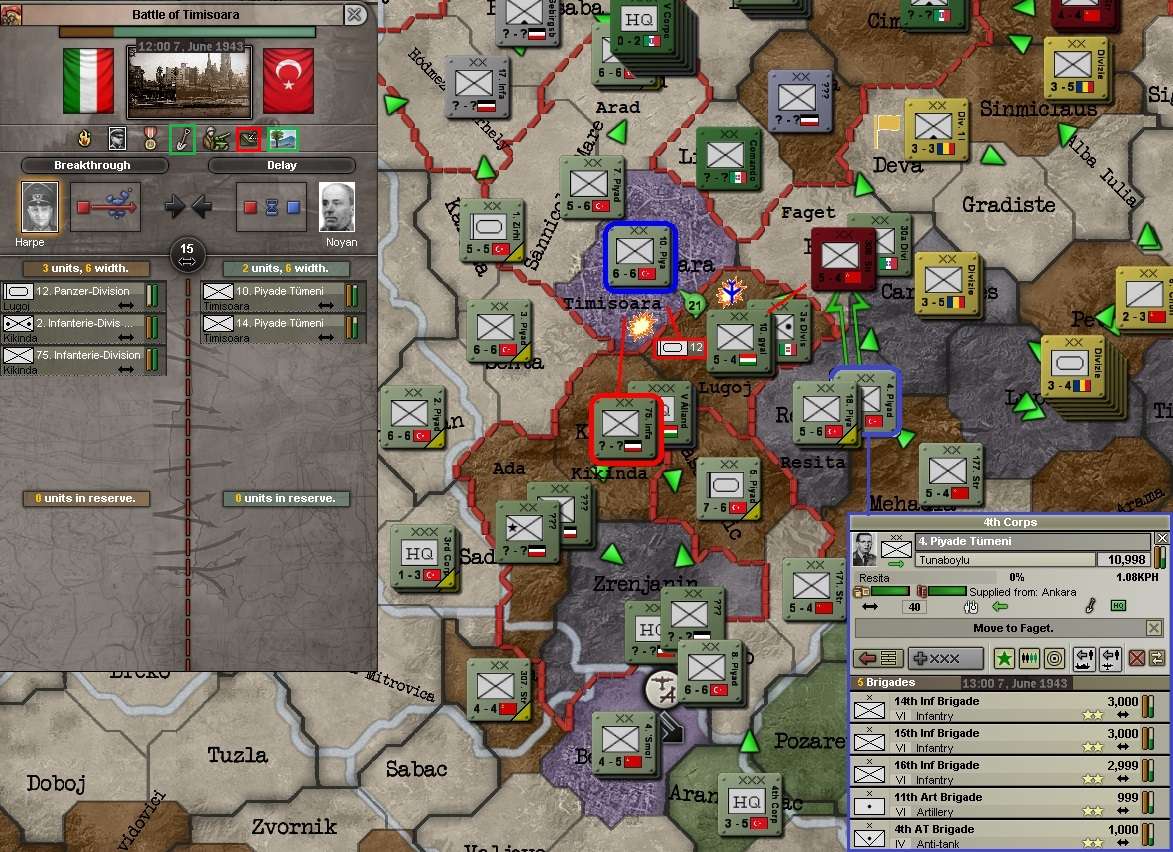
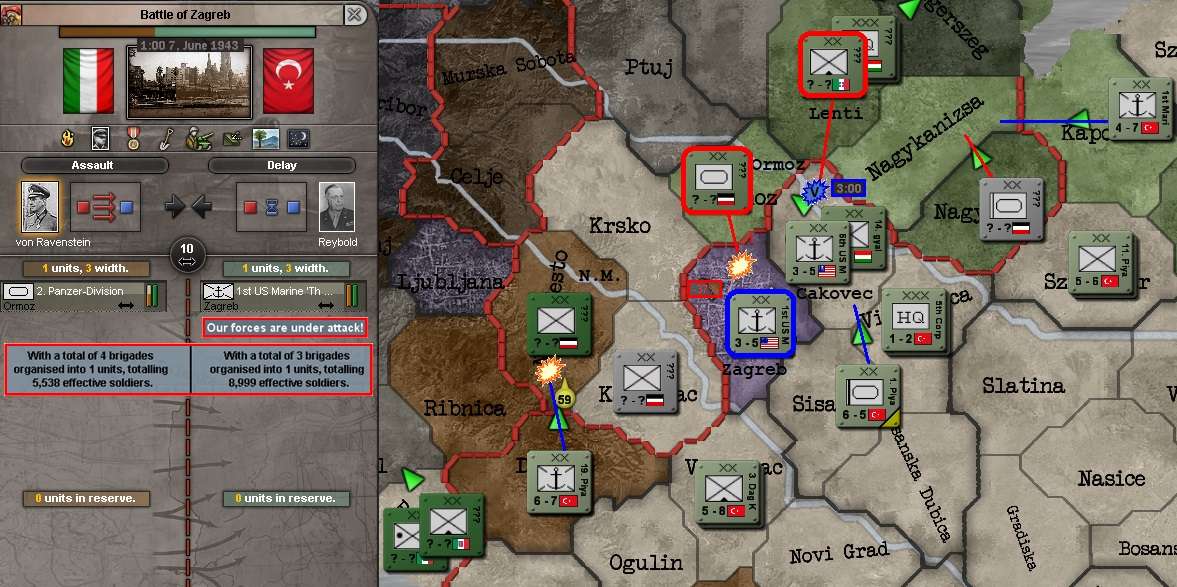
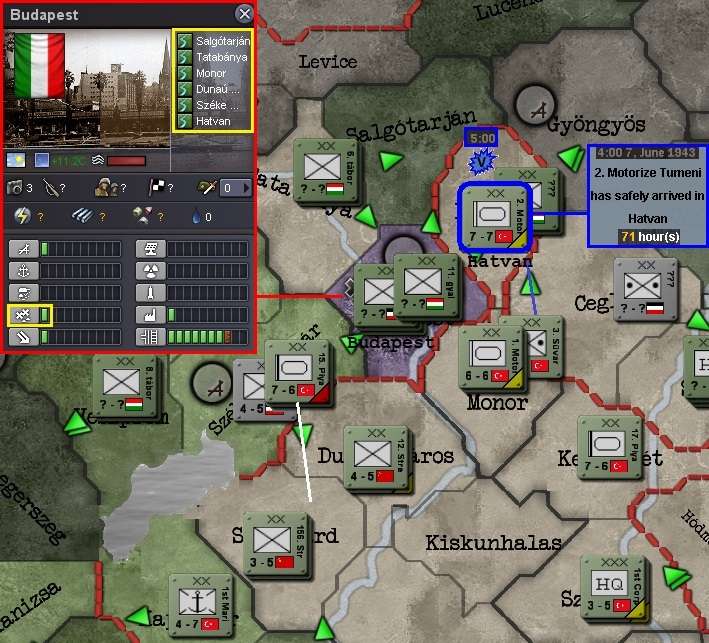
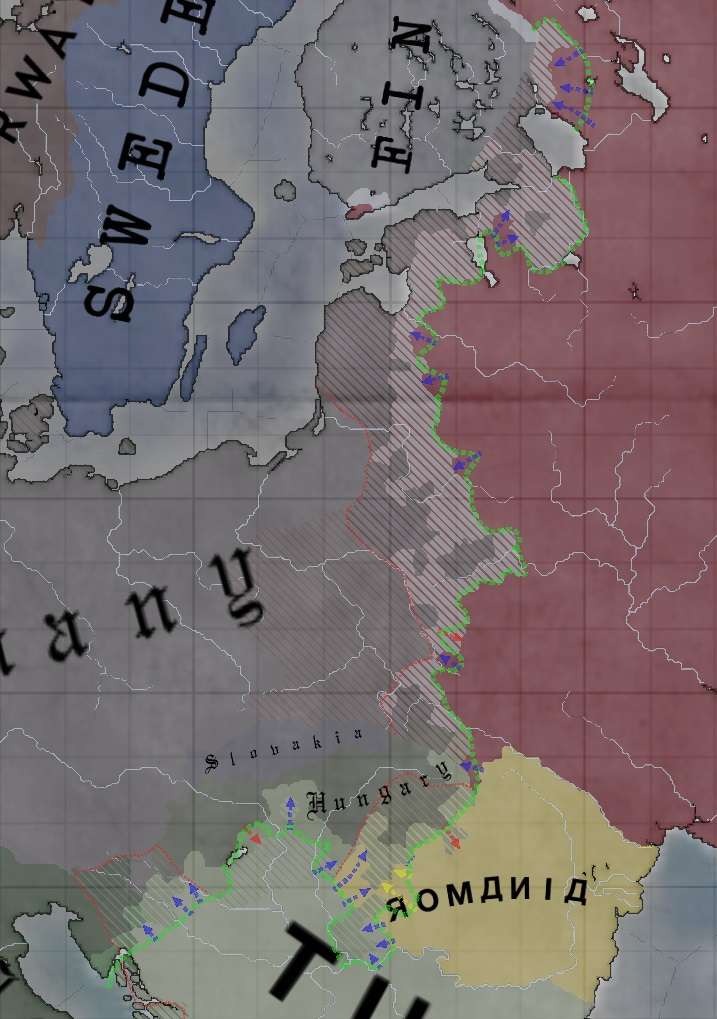
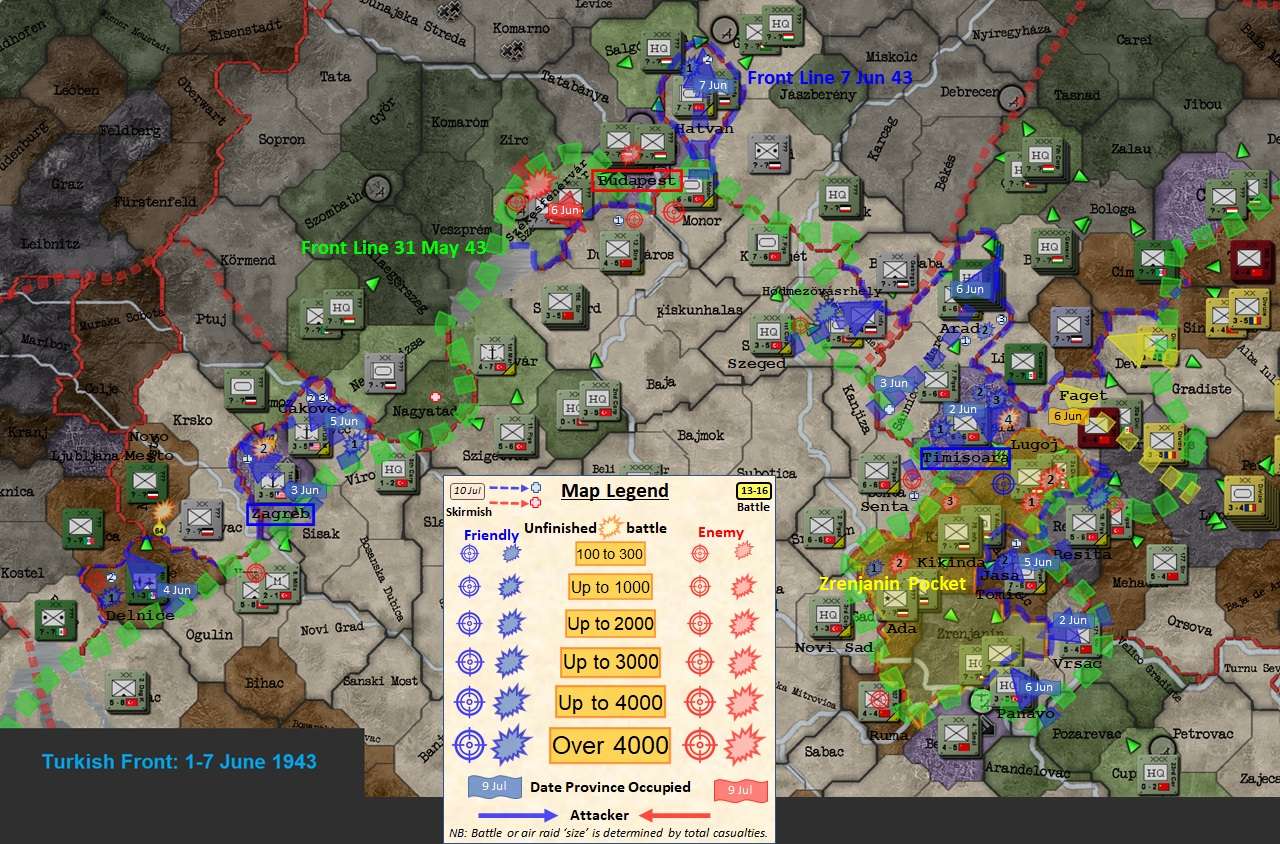
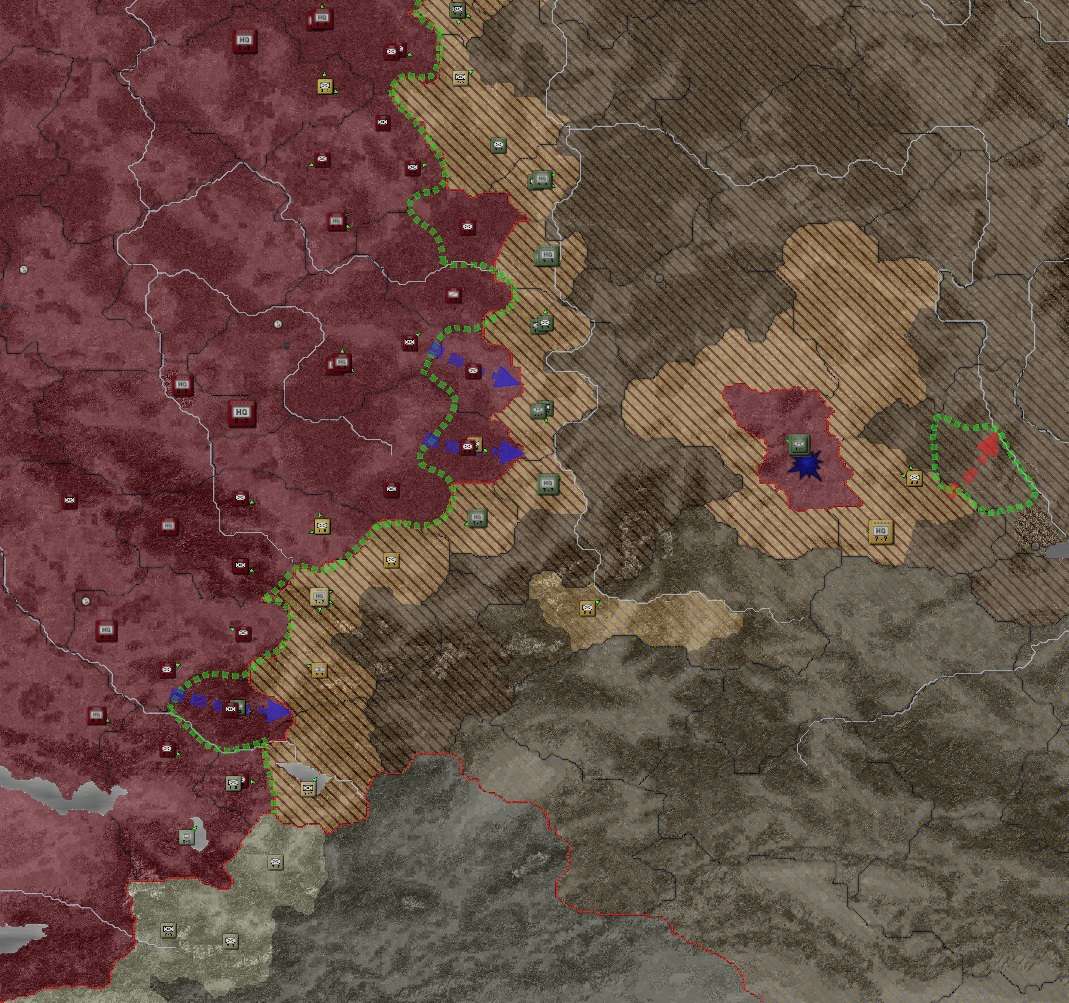

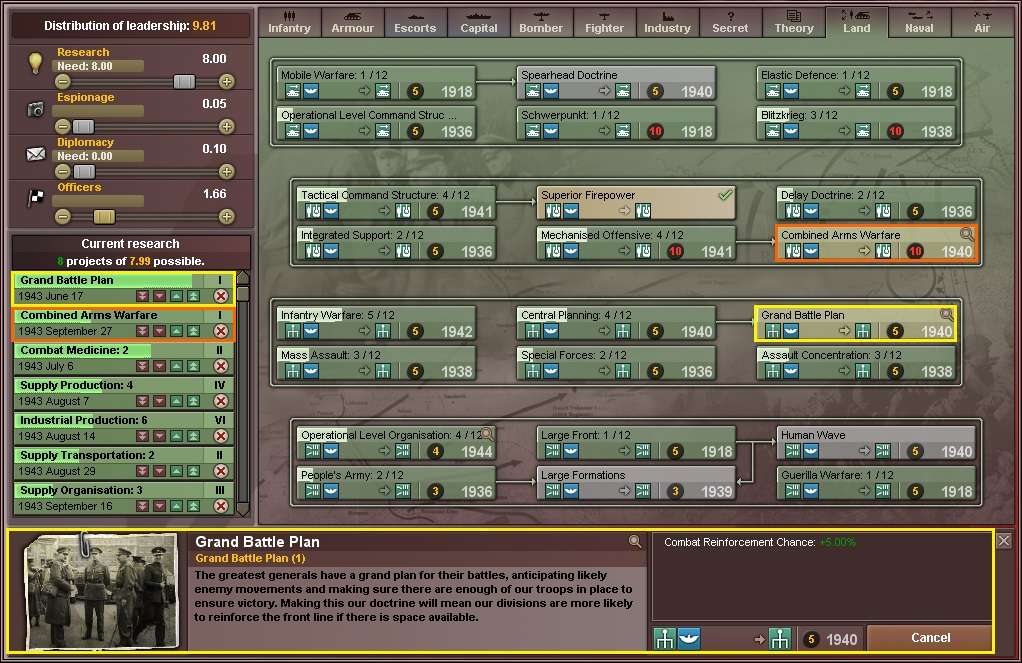

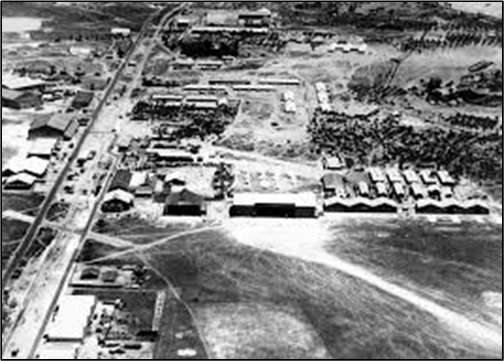
Then, in the form of a present in honour of the anniversary for the Great Liberation War’s start three years before, Timisoara was liberated for the Romanians at midday by Noyan’s 10 Inf Div. The press cameras were invited for a photo opportunity at 1st Army HQ that day, but the city itself was still too dangerous for them when Inönü made a brief visit later that evening. And the grim fight for Lugoj continued.
In better news for the US Marines, the 1st ‘Old Breed’ US Marine Division retook the long-occupied Croatian GNR capital of Zagreb unopposed at 7pm. It was lucky for any potential collaborators there it was Americans and not Turkish troops who liberated the city, and without fighting.
That morning, a surprise report came through that morning of a British raid (it was hardly large enough to be termed an invasion) in northern Germany! One of the raiding divisions had struck inland after taking Bremen and was heading towards an undefended Hamburg. How long this raid could feasibly last before ending in tears was uncertain, but it made for an entertaining distraction.
The British also reported that Singapore still held, while the situation in eastern India had at least not got any worse in the last three days.
Then came the most stunning news of the day: the Soviets had suddenly seized Faget! The pocket was closed off – by Turkey’s trusty allies. Even though Lugoj had never been taken, the Axis troops were still trapped.
It was estimated around 63,000 Axis troops (mainly German, with some Hungarian and Italian formations) were now trapped, with three HQs, plus five infantry, two motorised, one medium panzer and one SS division (the Totenkopf) cut off. None were out of supply yet, but Inönü hoped that would change in coming days.
This realisation caused some consternation at HQ 1st Army when the recon report was received: it was going to make Budapest an even harder nut to crack!
the Soviets inching forward to try for their own grand encirclement in the north.
facepalmBut first, a late report from the British had arrived late on 31 May of an uprising by Japanese-funded Italian rebels in East Africa.
I only saw this coming only as much as the policemanThud. All went black for the Turk, whose good luck had turned to bad. Alas for him, his was a solo beat.
On January 1st it'll get recalculated and since it's a 1944 tech the ahead-of-time penalty will become zero, so it'll probably be complete a few months before May.At midnight a long-awaited advance in Turkish doctrine was celebrated. Post-attack reorganisation would be reduced by another 24 hours. The team was kept on the task – which was predicted to take until May 1944!
if we're able to hold, one of the divisions holding Budapest will be completely out of organizationA spoiling attack on Budapest was investigated at that time, but the two main candidates were reorganising from past combat damage or attacks.
I'm sure they were claiming on their papers the division was never captured at allBut a more detailed report [I just had to quickly tag for that to see what was going on, having just captured the bastards last month] showed it was a newly re-raised formation, with only one half-strength SS brigade and no commander.
Good catch! Once, we were the side to thin our lines at one place to attack elsewhere. Now they're the ones having to prioritize.That morning, a new front was opened up when weakness was detected in the enemy line between the Adriatic and Zagreb. It looked like the Axis forces now attacking Székesfehérvár may have been stripped in part from there.
3rd Mtn back to business baby! We're on them like hungry wolvesMeanwhile, at 10am Delnice erupted in a hail of artillery and small arms fire as all three Turkish mountain divisions launched a coordinated attack on the Germans defending it. Despite a skilful counter-attack by the enemy commander von Thoma, he was greatly outnumbered and the attack began making rapid progress.
Here same screenshot is put twiceAfter a sharp fight which saw the enemy take very heavy losses, the mountaineers won in Delnice that night. 2 and 3 Mtn Divs were held in place, while 1 Mtn continued the advance, with the raw 19 Inf Div (the one with the ‘spare’ marine brigade attached) ordered to join their advance to secure it.
VUR HA!!! A historic day! We told we'd be back.Then, in the form of a present in honour of the anniversary for the Great Liberation War’s start three years before, Timisoara was liberated for the Romanians at midday by Noyan’s 10 Inf Div.
What a speech! Temeşvar'ı Unutmadık! Not so long ago, we were discussing leaving Romania and withdrawing to deeper lines. Now we're liberating all that we had to leave behind.
Finally they're doing something! Maybe they'll follow up with more divisions?That morning, a surprise report came through that morning of a British raid (it was hardly large enough to be termed an invasion) in northern Germany! One of the raiding divisions had struck inland after taking Bremen and was heading towards an undefended Hamburg. How long this raid could feasibly last before ending in tears was uncertain, but it made for an entertaining distraction.
To Cluj!But the biggest developments of the afternoon came to the north of the pocket. At 2pm, 13 Inf Div finally grabbed Arad, with less than a day or reorg required before they could attack again and 2 Armd div on the way.
YesssThen came the most stunning news of the day: the Soviets had suddenly seized Faget!
it'll happenThe wider Patriotic Front was mainly a story of Comintern progress, with the Soviets inching forward to try for their own grand encirclement in the north.
facepalm again...The British had lost no ground in India, nor made any in North Africa. But their raid in Germany was still going on, Hamburg having been taken but Bremen lost. However, unless they received reinforcements soon, their position seemed doomed.
I didn't expect this from our American allies...The RAF Base at Aboukir, a short distance outside Alexandria, viewed from the air. Picture taken from Perse’s US transport plane as it approached on the afternoon of 7 June 1943.
I must admit to some outrageous confusion at the map here, as the TFH vanilla map looks quite different than I remember it. Is there no port in the Italian lands? How do they supply their troops at the start of the Abyssinian war? I must be forgetting something here...
Comment: I missed this at the end of last month. At first glance I was wondering how the Italians had managed an amphibious landing, but all became clear when I focused in on this rebellion.
Vur ha!Then, in the form of a present in honour of the anniversary for the Great Liberation War’s start three years before, Timisoara was liberated for the Romanians at midday by Noyan’s 10 Inf Div.
I do feel like this attack would be a bridge too far, at some point all of our foolish exploitation attacks are going to come back to bite us, we really don't have the critical mass of forces to support these even if our RAW doctrine demands that we pursue them anyways.13 Inf Div arrived in Sânnicolau Mare three hours later, pushing on straight away north-east towards Arad
Wilhelmshaven is right there, you stupid--agh!! Stupid AI can't even figure out that it needs to take a port to land the reinforcements at and supply the offensive. They could totally pull this off if they could take their pants off their heads for two damn seconds!That morning, a surprise report came through that morning of a British raid (it was hardly large enough to be termed an invasion) in northern Germany! One of the raiding divisions had struck inland after taking Bremen and was heading towards an undefended Hamburg. How long this raid could feasibly last before ending in tears was uncertain, but it made for an entertaining distraction.

Admittedly, this is one that Paradox did get right. Kind of. Within the constraints of the game. Budapest is of course split into two cities, Buda and Pest, by the river running between them, thus it is technically correct that they should have a river defense from any angle as no matter which side an attacker is coming from, half the city is behind a river and the Pest side in particular, if I remember correctly, has some impressive entrenchments overlooking. Of course, when attacked from every side simultaneously you would think that there should be no river defense bonus, and geographically you would be correct, but given that HoI3 doesn't really have any way to make the province geography dynamic in that way I think we have to give Paradox a pass here.At 4am, 2 Mot Div secured Hatvan, quickly repulsing a probe by the German Leichte Division (two Turk v 18 German casualties). It was at this point that it was fully appreciated that [Paradoxically] no matter which side of the river Budapest was attacked from – even if from all at once – the troops defending it would have the advantage of a river defence! This realisation caused some consternation at HQ 1st Army when the recon report was received: it was going to make Budapest an even harder nut to crack!
I think you'll find there is a port in the now french-controlled (ATL) part of Eritrea, to the South-East of Asmara. The province is called Edd iirc.I must admit to some outrageous confusion at the map here, as the TFH vanilla map looks quite different than I remember it. Is there no port in the Italian lands? How do they supply their troops at the start of the Abyssinian war? I must be forgetting something here...
Ah, that would be it, then. HPP moves that port to Asmara, probably because the Ethiopians take Edd in the first week of the game and of course that could wreak all sorts of havoc on an unsuspecting Italian AI, much like the British, a stiff breeze, or even the French can, in fairness.I think you'll find there is a port in the now french-controlled (ATL) part of Eritrea, to the South-East of Asmara. The province is called Edd iirc.
Wilhelmshaven is right there, you stupid--agh!! Stupid AI can't even figure out that it needs to take a port to land the reinforcements at and supply the offensive. They could totally pull this off if they could take their pants off their heads for two damn seconds!
Quick response: oops! Thanks for picking that up - corrected.Here same screenshot is put twice
